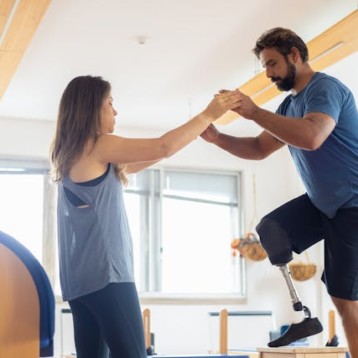The research team was led by professors Joshua Sanes and Jeff Lichtman from the Center for Brain Science at Harvard. Their paper, published online in the journal Proceedings of the National Academy of Sciences, aims to explain previous findings, indicating that exercise and restricted-calorie diets help to stave off the mental and physical degeneration of aging.
The experiments were performed on genetically engineered laboratory mice. The design was to make the mice’s nerve cells glow in fluorescent colors, showing that some of the debilitation of aging is caused by the deterioration of connections that nerves make with the muscles they control. These structures are called neuromuscular junctions.
According to Sanes, these microscopic links are remarkably similar to the synapses that connect neurons to form information-processing circuits in the brain. Moreover, he says that in a healthy neuromuscular synapse, nerve endings and their receptors on muscle fibers are almost a perfect match, like two hands placed together. The paper explains that this lineup ensures maximum efficiency in transmitting the nerve’s signal from the brain to the muscle, which is what makes it contract during movement.
The neurological process aging people face is simple; the neuromuscular synapses deteriorate and nerves shrink, leading to failure to cover the muscle’s receptors completely. Sanes said the intersections between the nerves and muscles can go from a continuous network that looks like a pretzel to one that resembles a bunch of beads — broken into discontinuous individual lumps, interfering with transmission of nerve impulses to the muscles. This loss of activity can result in wasting and eventually even death of muscle fibers.
“With calorie restriction, we saw reversal of all of these things. With exercise, we saw a reversal of most, but not all,” said Sanes. In his work, he found that mice on a restricted-calorie diet largely avoid that age-related deterioration of their neuromuscular junctions, while those on a one-month exercise regimen when already elderly partially reverse the damage.
Although the experiments’ results are unambiguous, Sanes still cautions against drawing conclusions about the effectiveness of exercise versus calorie restriction in preventing or reversing synaptic damage. He notes that longer periods of exercise might have more profound effects, a possibility he and Lichtman are now testing.
When asked about the motivation behind this research, Sanes said: “There’ve been quite a few reports that caloric restriction and exercise delay cognitive decline, but people don’t know much about the cellular reasons behind them. These findings in neuromuscular synapses make us curious to know whether similar effects might occur in brain synapses.”
One of the benefits drawn from the study’s results is better understanding of neuromuscular junctions, which are responsible for gradual loss of muscle mass and strength (sarcopenia). Such loss is a common problem in the elderly, debilitating otherwise healthy individuals who can lose their balance and break a hip or other bones, leading to a cascade of physical ills. “The effects of exercise and caloric restriction on innervation may help explain their beneficial effects on sarcopenia,” said Sanes.
The five-year collaboration between Lichtman and Sanes led to this study, which was financed through grants from the National Institute on Aging, the National Institute of Neurological Disorders and Stroke, and the Ellison Medical Foundation. Although the images obtained are clear, both scientists claim their work was structural, not functional, and therefore their results cannot be applied immediately without further research. One of the major reasons for this belief is that they are yet to test how well the synapses worked.
“Caloric restriction and exercise have numerous, dramatic effects on our mental acuity and motor ability,” Sanes concludes. The research “gives us a hint that the way these extremely powerful lifestyle factors act is by attenuating or reversing the decline in our synapses,” he said.
TFOT also covered the key to living healthily ever after, discovered at the University of Southern California, a new method to decrease neuron loss rate in mice bearing Alzheimer’s disease and ALS analogues, developed by scientists from MIT and Harvard, and the benefits surfing the web has on the elderly, reported by UCLA researchers.
For more information about the latest insights on healthy aging, see Harvard’s official press release.











